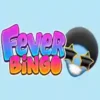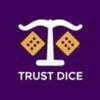I was playing Pai Gow Poker with a side bet on a high hand. I received a wild card, which I used as the five of hearts for a straight flush (hearts 2-7), along with a five and three of diamonds in the front. This gave a nice payout for the side bet, while I pushed the main wager. Looking back, the five of diamonds would have given me a straight and the wild card could then have been an Ace/3, which would have won the main bet. Would I still be able to use the wild card as the five of hearts for the side bet? (Clearly, this was small potatoes compared to the 50:1 payout on the straight flush, but I am curious). Rob R.
The seven cards you were dealt, Rob, required you to form a five-card hand (the “high hand”) and a two-card hand (the “low hand”). The five-card hand is ranked like traditional poker hands (royal flush, four of a kind, straight flush, etc.).
Using your wild card as a five of hearts, you caught a straight flush, but did you skillfully arrange your cards into two poker hands correctly?
Based on the 50:1 payoff on your side bet, my guess is that you were playing “Fortune” Pai Gow Poker, a variation of Pai Gow Poker that allows you to make a side bet on a poker hand with the ranking of trips’ or better. This side bet pays based on the value of ALL seven of your cards, and it does not matter how you set your hand.
Winning one hand (“high hand”) and losing the other (“low hand”) as you did is a push or tie, where you neither win nor lose, but because of your side bet on the high hand, you received a 50:1 payout. You still could have set your hand per your query, using the Joker as an Ace and matching it with the three for the win, instead of your eventual push.
Regarding last week’s column, you stated this about the slot machines of yesteryear; “Slots had a certain number of reels with a specific number of symbols, and each symbol, on a legitimate machine, would have had an equal chance of coming up on a spin.” Would the player of the past been able to figure out the true odds of hitting a jackpot? Jason A.
Calculating the odds of the top jackpot was pretty straightforward.
On a three-reel machine, and presuming each reel had 10 symbols, the chances of hitting any particular symbol on all three stops for the highest jackpot were: 1/10 X 1/10 X 1/10 = 1/1000.
Nonetheless, slot machine jackpots didn’t then, nor do they still, pay out at actual odds, simply because slot machines are a negative expectation game. For example, one of the most popular slot machines of the past, a nickel, Mills Bell-O-Matic Standard, had a top jackpot of $7.50 (150 nickels), which obviously paid nowhere near true odds.
Gambling Wisdom of the Week: “Las Vegas: all the amenities of modern society in a habitat unfit to grow a tomato.” —Jason Love




















